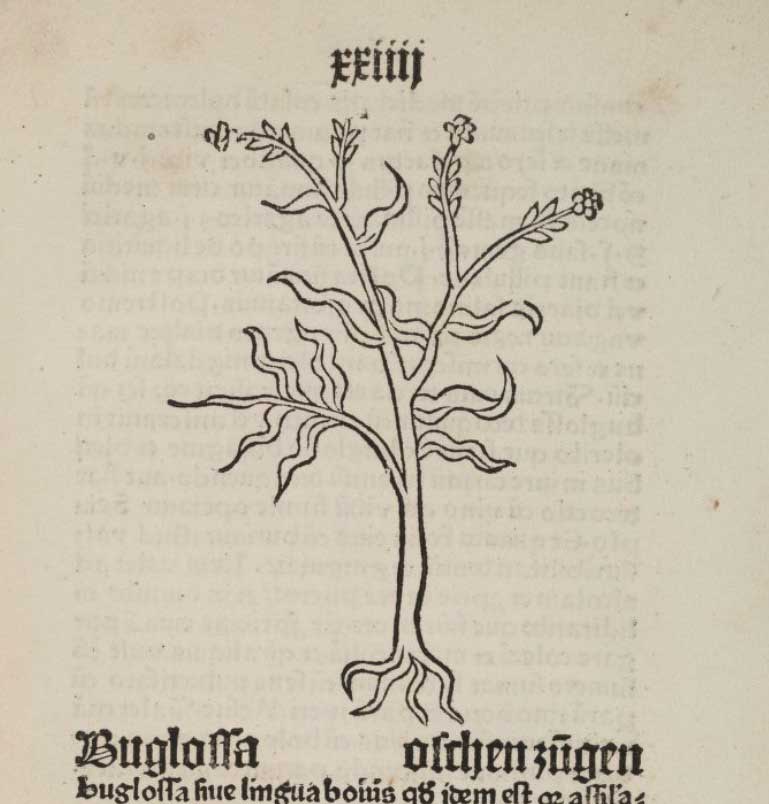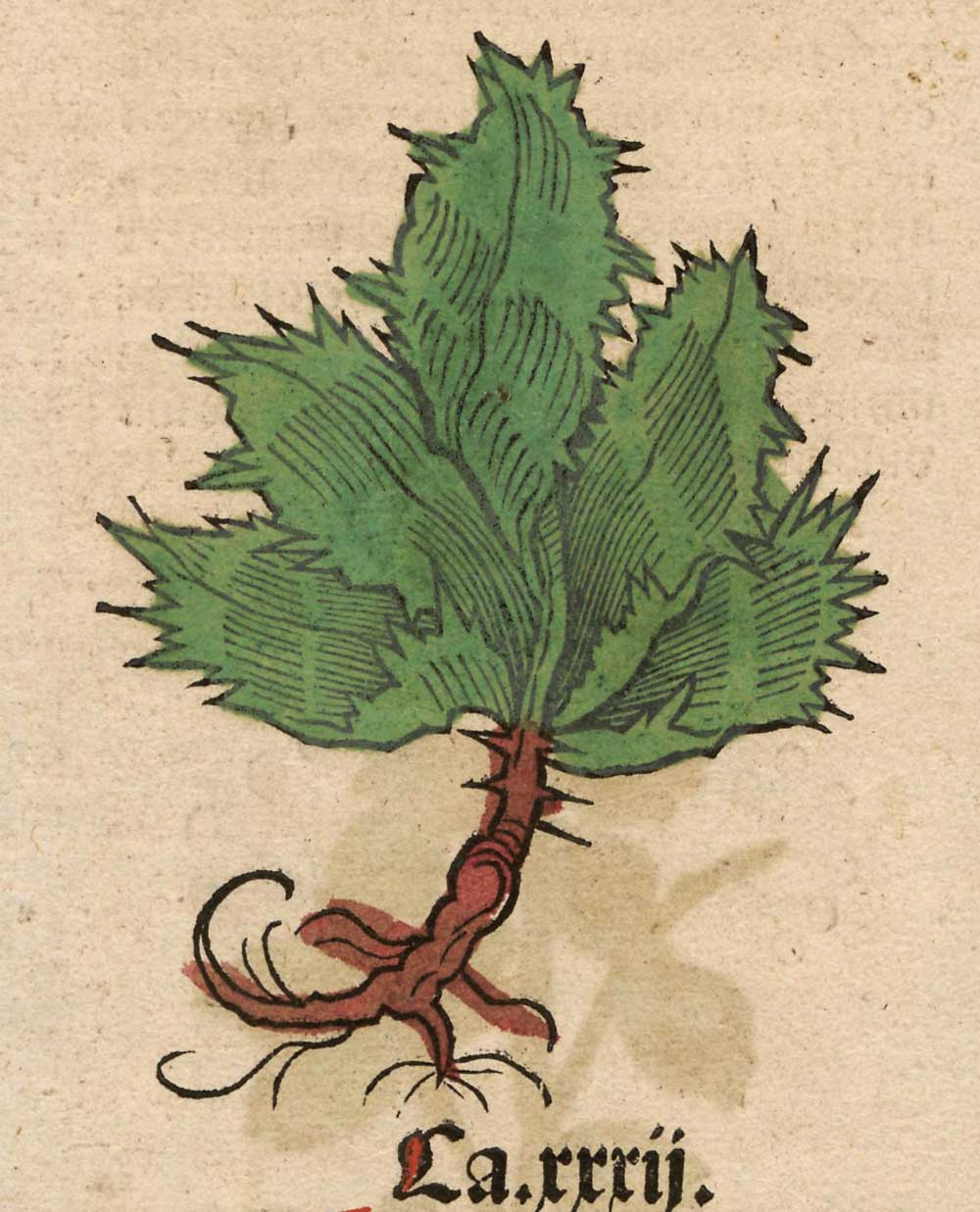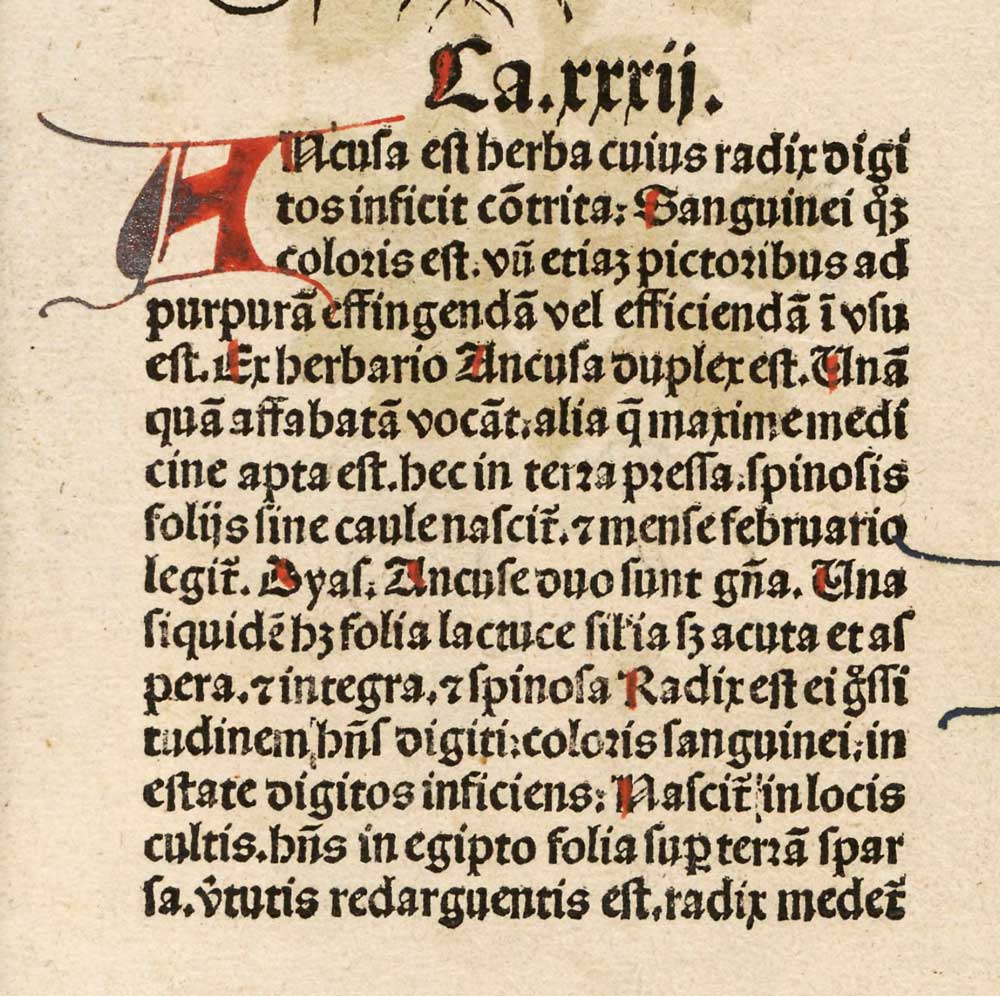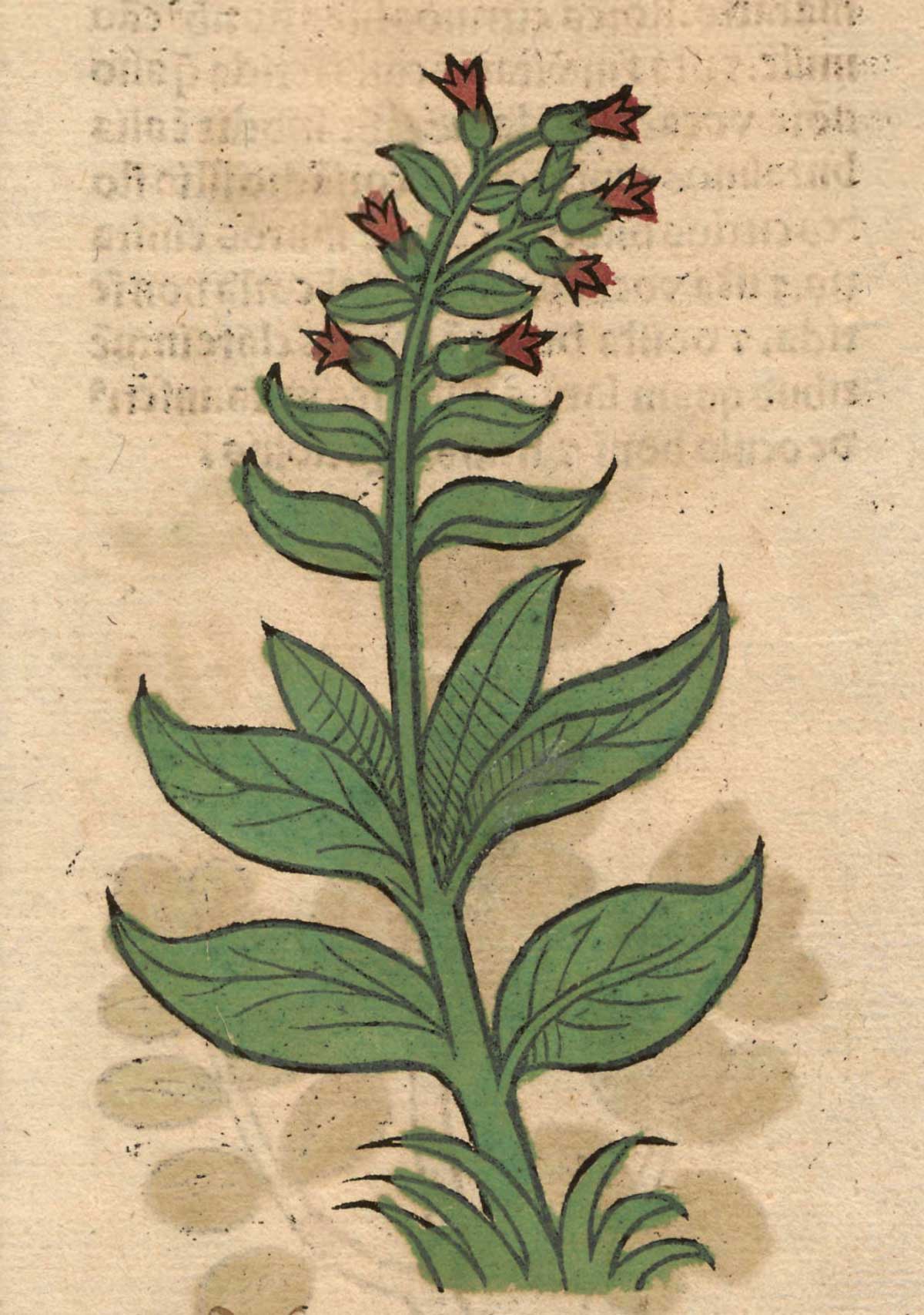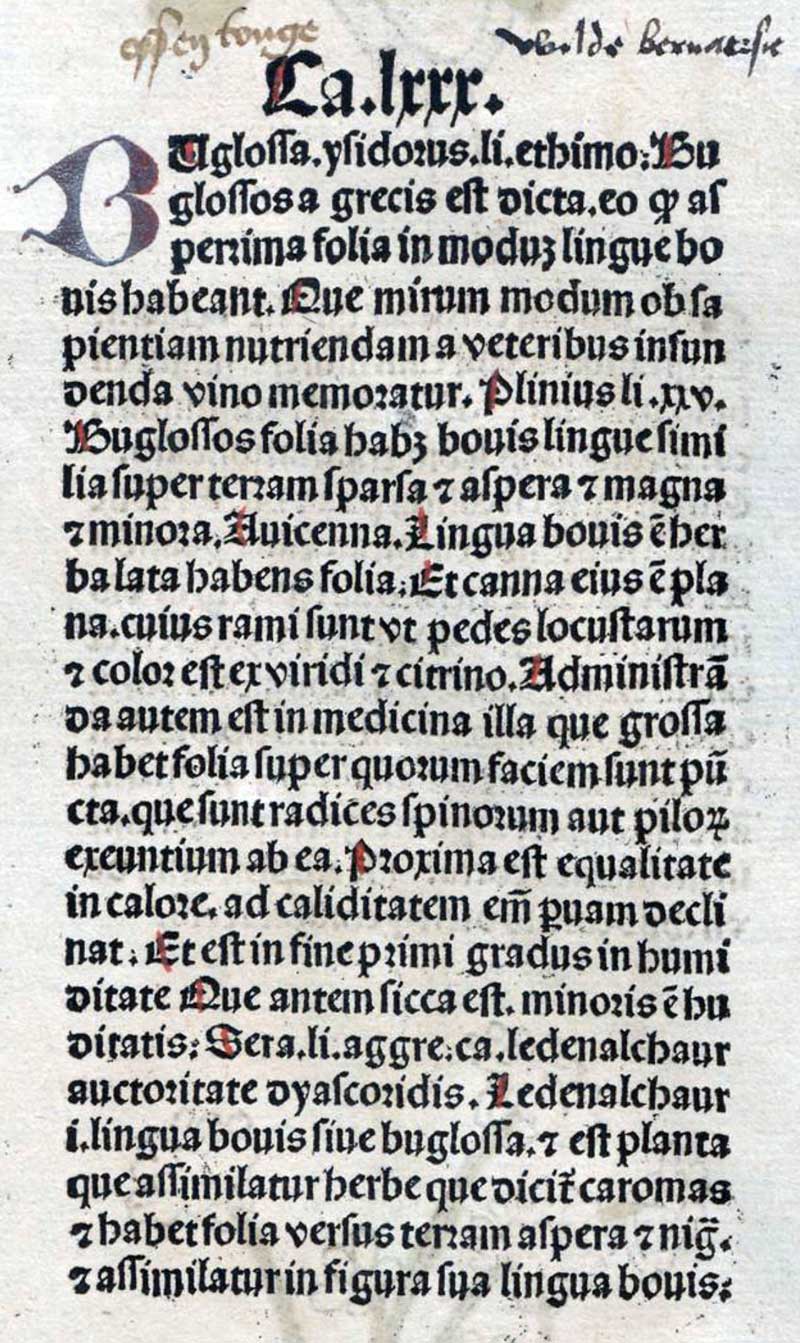buglosse, the tongue of an ox;
Original French: Bugloſſe, a langue de Beuf:
Modern French: Buglosse, à langue de Beuf:
Among the plants named by similitude.
Notes
Buglossa
Ancusa
Ancusa (text)
Buglossa
Buglossa (text)
buglosse
De βούνλοσσζ, langue de bœuf: mot composé de βοϋζ[?], bœuf, et γλωσσα, langue.
bugloss
Nicander, Theriaca 541. Consider now the excellent root of albicius’s bugloss: its prickly leaves grow ever thick upon it.
Bugloss
Pliny xxv. 8, § 40.
buglosse
Iungitur huic buglossos boum linguae similis, cui praecipuum quod in vinum deiecta animi voluptates auget, et vocatur euphrosynum.
Akin to the plantain is buglossos, which is like the tongue of an ox. The most conspicuous quality of this is that thrown into wine it increases the exhilarating effect, and so it is also called euphrosynum, the plant that cheers.
buglossse
De βονζ, bœuf, γλωσσα, langue, allusion à l’aspect des feuilles: «bouglossos, boum linguæ similem,» dit Pline, XXV, 40. La buglosse de Pline est, pour Sprengel et Cazin, notre vulgaire bourrache, Borrago officinalis, L.; pour Fée, Anchisa paniculata, Ait. Sainéan (H. N. R., 122) rapporte la buglosse de Rabelais à Anchusa italica, Retz.
pas similitude
Toutes ces plantes, dans De latinis nominibus, sauf pour le delphinium.
Buglosse
De βοῦζ, «bœuf», et , γλὡσσα, «langue» (Pline, XXV, xl).
buglosse
bugloss. Forms: buglosse, buglose, buglos), bugloss. [adopted from French buglosse: Latin buglossa, adaptation of Greek bouglwssoj, formed on bouj ox + glwssa tongue, from the shape and roughness of the leaves.]
A name applied to several boraginaceous plants, particularly the small, corn, or field bugloss (Lycopsis or Anchusa arvensis); viper’s bugloss (Echium vulgare), and other species of Echium; also by some old herbalists to Helminthia echioides, prickly ox-tongue.
1533 Sir Thomas Elyot The castel of helth (1541) 11 Cynamome: Saffron… Buglosse: Borage.
1542 Boorde Dyetary xix, The rootes of Borage and Buglosse soden tender… doth ingender good blode.
1605 Ben Jonson Volpone iii. iv. 61 A little muske, dri’d mints, Buglosse, and barley-meale.
1699 John Evelyn Acetaria, or a discourse of sallets 14 What we now call Bugloss, was not that of the Ancients.
